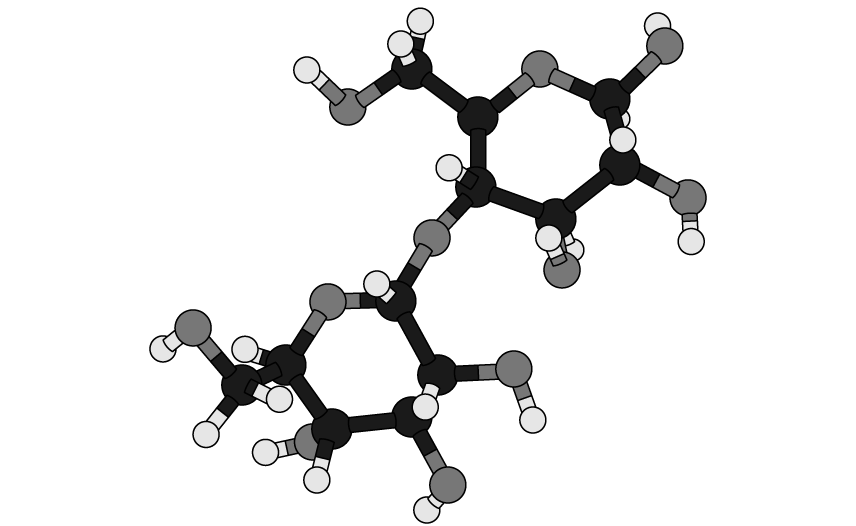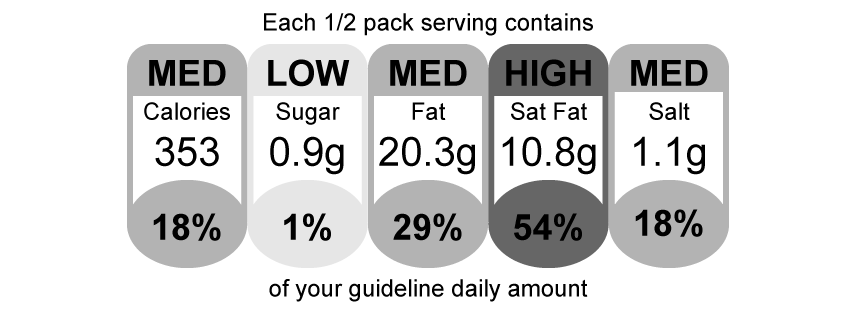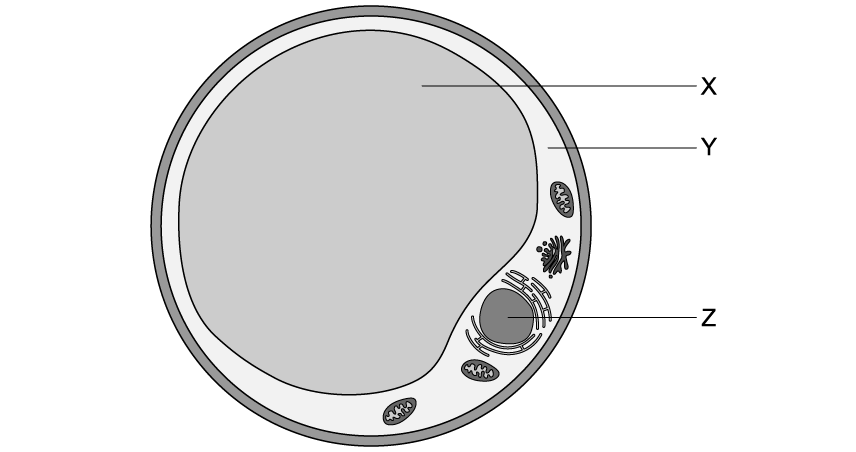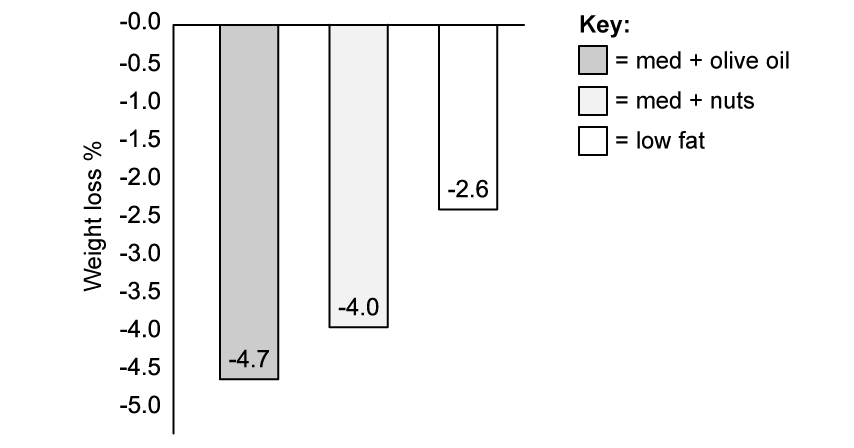a)
Draw a molecular diagram of a 10-carbon saturated fatty acid.
[2 marks]
Assess your score
View Answer
b)
Explain why unsaturated fatty acids form different shaped-triglycerides whereas saturated fatty acids do not.
[2 marks]
Assess your score
View Answer
c)
Below is a typical label printed on a piece of food packaging.
The product in question is a cookie-style snack food, sold in small packets with see-through plastic packaging.
Suggest and explain one aesthetic reason why a food company might wish to market such a food product despite its high saturated fat content.
[2 marks]
Assess your score
View Answer
d)
Doctors recommend that the majority of dietary fat intake should come from monounsaturated and polyunsaturated fats.
Explain why.
[2 marks]
Assess your score
View Answer
Previous Question Next Question
a)
Typical energy content values of various food group molecules are given in the table below.
Food Group Typical energy content / kJg-1
Protein
15
Carbohydrate
17
Fat
38
[2 marks]
Assess your score
View Answer
b)
The diagram shows a cell with a role in storage.
i)
Identify structures X , Y and Z in this diagram.
[3 marks]
ii)
Suggest which tissue this cell forms part of.
[1 mark]
Assess your score
View Answer
c)
A person's body mass index is 26.4 and their mass is 78.3kg.
Calculate the person's height in metres, to 2 decimal places. The formula for BMI is shown below:
[2 marks]
Assess your score
View Answer
d)
A newspaper heading states that "High fat diets lead to weight loss!" based on the following study and data.
Scientists carried out a study across five years in which 8254 participants followed one of three diets:
a Mediterranean diet with added extra virgin olive oil a Mediterranean diet with added nuts a low fat diet
None of the diets involved reducing calories or increasing physical activity.
The graph below shows the results of weight loss in participants after five years.
Use the data and information provided to evaluate the newspaper's claim.
[4 marks]
Assess your score
View Answer
Previous Question Next Question
a)
Explain why cholesterol forms associations with proteins called lipoproteins eg. LDL (low density lipoproteins) and HDL (high density lipoproteins).
[2 marks]
Assess your score
View Answer
b)
Outline the series of events by which low density lipoproteins (LDLs) raise the risk of a person suffering from coronary heart disease.
[4 marks]
Assess your score
View Answer
c)
Many claims about the health benefits and drawbacks of food are made. One such is the claim that a high consumption of trans- fats causes coronary heart disease.
Evaluate this claim.
[3 marks]
Assess your score
View Answer
Previous Question Next Question





